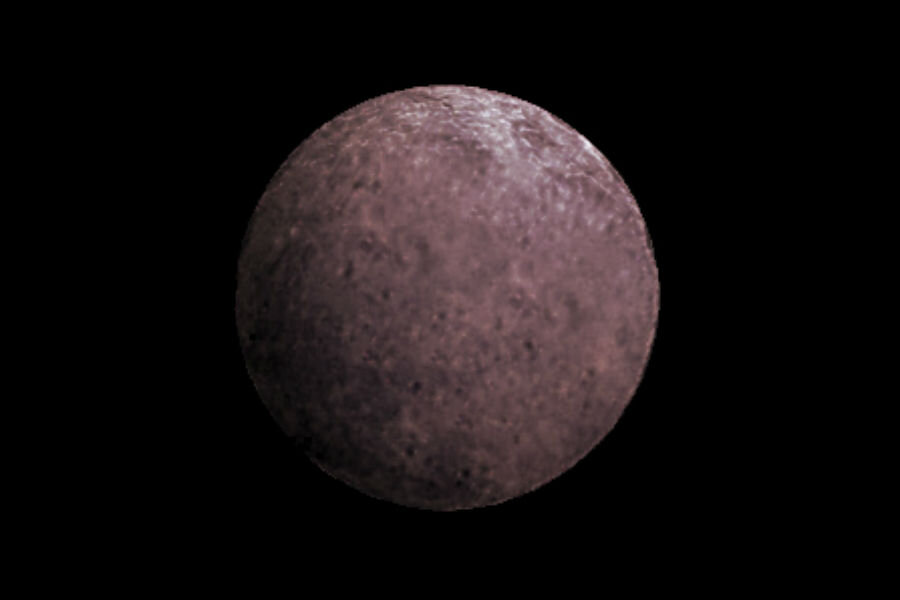'Snow White': This mysterious dwarf planet just got bigger
Loading...
A dwarf planet in the depths of our solar system, discovered only in 2007, has been given a big boost in prominence, as astronomers have determined it is likely much bigger than previously believed.
Originally given the nickname Snow White – partly because it was the "seventh dwarf" to be discovered in our solar system, partly because astronomers thought it particularly bright – it has no official name, known only as 2007 OR10.
But if these new measurements prove accurate, it might be time to settle on a moniker, because they would make Snow White the third-largest dwarf planet circling our sun, bested only by Pluto and Eris, and bigger than three others already graced with titles: Haumea, Makemake, and Ceres.
"Our revised larger size for 2007 OR10 makes it increasingly likely the planet is covered in volatile ices of methane, carbon monoxide and nitrogen, which would be easily lost to space by a smaller object," lead researcher András Pál, of Konkoly Observatory in Budapest, Hungary, said in a NASA press release. "It's thrilling to tease out details like this about a distant, new world – especially since it has such an exceptionally dark and reddish surface for its size."
Measuring the size of distant worlds is a tricky task, and until recently, Snow White was considered the second furthest object from Earth in our entire solar system, according to New Scientist. In such cases, planets often appear as little more than pinpricks of light, and astronomers struggle to know whether they are a small, bright planet or a bigger, darker one.
So it was that 2007 OR10 was originally bestowed with a diameter of about 1,280 kilometers, based solely on data from the European Space Agency's Herschel mission. In this new study, published last month in The Astronomical Journal, researchers combined this information with the efforts of NASA's re-purposed Kepler space telescope, whose mission has now been dubbed K2.
"K2 has made yet another important contribution in revising the size estimate of 2007 OR10," said Geert Barentsen, Kepler/K2 research scientist at NASA's Ames Research Center in Moffett Field, California, said in a press release. "But what's really powerful is how combining K2 and Herschel data yields such a wealth of information about the object's physical properties."
One of Kepler's critical contributions was to identify the slow rotation of 2007 OR10 on its axis: 45 hours, one of our solar system's slowest. Armed with this extra intelligence, the astronomers calculated that the planet is about 250 kilometers larger than previously thought, with a diameter of about 1,535 kilometers.
Yet not everyone is convinced about the new findings, including the original discoverer of 2007 OR10, Mike Brown of the California Institute of Technology.
"I'm a little skeptical of the size measurement," Dr. Brown told New Scientist, highlighting the fact that this recent research gives a range of possible diameters, beginning as low as 1,310 kilometers. "I think with the uncertainty it could easily be smaller than Makemake."
Even if it is smaller than Makemake, however, Snow White would still be bigger than Ceres, laying a firm foundation for those in favor of finding an official title.
Indeed, as original discoverers of the object, Brown and his team would be given the honor of choosing the name. The criteria for making that choice often lie in identifying unique characteristics, and as we learn more about 2007 OR10, this becomes more feasible. It appears to be an unusually dark object, for example, and its surface seems imbued with a deep red hue, leading observers to ponder the possibility of vast swathes of methane ice.
The planets of our solar system have generally been named after gods or goddesses from Greek and Roman mythology, their titles sometimes bestowed in honor of physical attributes, sometimes with other characteristics in mind.
Eris, for example, a dwarf planet a shade smaller than Pluto, and discovered in 2003, was named after the Greek goddess of discord and strife, in acknowledgement of the fierce debate that ensued surrounding the definition of a planet.
For now, however, 2007 OR10 remains nameless, but its rise to prominence in the cast of our solar system will surely grant it a title in the not-too-distant future. Until then, Snow White it is.






